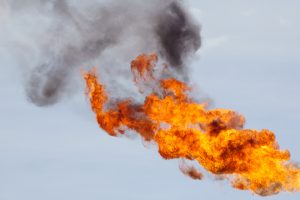 For investors concerned with environmental, social and governance issues, flaring poses one of the most immediate and material risks to shareholder value in the oil and gas industry. For an industry that prides itself on operational excellence, flaring is a waste of potentially saleable product and an unsustainable industry practice with detrimental climate and public health effects.
For investors concerned with environmental, social and governance issues, flaring poses one of the most immediate and material risks to shareholder value in the oil and gas industry. For an industry that prides itself on operational excellence, flaring is a waste of potentially saleable product and an unsustainable industry practice with detrimental climate and public health effects.
But the practice of routine flaring, which burns off natural gas at oil and gas sites when producers are unprepared to transport or store the fuel, is also a challenge with clear opportunity for solutions. As J.P. Morgan Asset Management recently observed, “flaring is a problem with multiple solutions and a compelling long-term economic proposition.”
As industry, investors and Texas regulators begin to acknowledge the problem, how can shareholders support management teams’ continuous improvement and understand which operators are getting it right and which are not keeping pace?
Asking the right questions through shareholder engagement is a good place to start.
An urgent problem that doesn’t have to be
Flares have long been known as a source of carbon dioxide emissions and local air pollutants. However, recent science has also revealed flaring to be a major source of methane emissions — the main ingredient in natural gas.
In the Permian basin in Texas and New Mexico, researchers found that more than one in 10 flares they looked at were either unlit — venting methane straight to the atmosphere — or only partially burning the gas. They calculate that Permian flaring emits over 300,000 metric tons of methane a year — 3.5 times more methane than current EPA estimates.
This makes neither climate, nor business sense. Fortunately, there is a better way.
5 questions for investors to move the needle
Whether you’re an investor monitoring potential risks associated with oil and gas investments, or you are concerned about sustainability and climate, the path forward is clear: Companies should end routine flaring as quickly as possible. Leading operators have demonstrated that this can be achieved by 2025.
To achieve this goal, investors should assess operator flaring performance and engage constructively with companies to ensure flaring reduction policies are integrated into operational goals. Here are five questions to ask:
- What are your flaring reduction targets for 2021 and 2022, and do they align with zero routine flaring by 2025 in Texas? Targets may be absolute reduction or intensity goals. Look for robust, time-bound targets; generally, short-term intensity-based targets should be 2% or lower as a feasible interim goal to indicate a company is on a pathway toward zero routine flaring.
- What incentives have you tied to flaring performance targets? Incentives motivate action and drive accountability throughout a company. Meeting targets should be tied to executive, board and operational level compensation.
- How are you ensuring routine flaring doesn’t happen when a well comes online? Operators should guarantee sufficient gas takeaway capacity is available at all assets, either through their own gathering lines or by coordinating with midstream partners. For other cases, operators should ensure that an effective alternative method (e.g. reinjection, on-site storage) is in place.
- When you must flare, how are you inspecting flares to ensure they are lit and functioning properly? A variety of best practices are available, but it is essential that operators have implemented a systematic protocol to verify flares are functioning properly. This includes having trained staff, contractors or remote monitoring systems frequently check flare efficiency.
- What steps have you taken to support a policy goal of zero routine flaring by 2025 in Texas and the Permian? Industry is only as strong as its weakest link — social license to operate is important at the company level, and the industry level. Leading operators should support robust policy to ensure risks are addressed across industry; this includes engaging constructively with the Texas Railroad Commission on the development and implementation of flaring policies and regulations.
An achievable goal: end routine flaring by 2025 (or sooner)
Industry consultants at Houston’s GaffneyCline find that routine flaring can be dramatically reduced using existing technology — even in fields growing as rapidly as the Permian had been in recent years.
The new report makes clear that routine flaring is not a problem with technology, but with leadership. While the flaring rate across the Permian basin was close to 4% in 2019 — with some operators flaring at rates over 20% — leading operators in the Permian are achieving rates at or below 1%.
Companies interviewed for the report — including Chevron, Pioneer, Occidental, EOG Resources and Parsley — were all able to implement infrastructure planning and operational changes to greatly reduce flaring intensities.
As ExxonMobil has recently echoed: “zero routine flaring is within everyone’s reach.”









